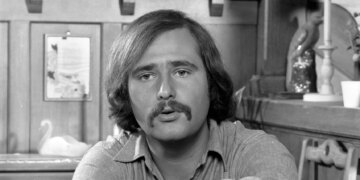The weakest labor market since 2011 has BofA asking, ‘Dude, where’s my job?’
The weakest job market since 2011 is increasingly being framed not as a glitch, but as the new normal—one where...
The epidemic of toxic flattery is spreading
Michael S. Roth is president of Wesleyan University and the author of “Safe Enough Spaces: A Pragmatist’s Approach to Inclusion,...
Vermont Moths Were Caught on Camera Drinking Moose Tears
Moths are little freaks. They eat your clothes, are obsessed with light, and now, according to new research, drink moose...
I’ve walked roughly 500 miles through Europe with my mom — twice. The experiences brought us closer together.
Going on international trips with my mom has helped us strengthen our relationship. Cameron McKeonMy mom has walked the Camino...
Some Spiders Build Fake Versions of Themselves to Trick Predators
A new study published in Ecology and Evolution documents that orb-weaving Cyclosa spiders build large, spider-shaped decoys into their webs...
The Biggest Pop Culture References in ‘Stranger Things 5’ Volume 2
Note: This story contains spoilers from “Stranger Things” Season 5, Volume 2. “Stranger Things” is nearly complete, and the pop...
New York City finally joins London, Singapore and other world-class cities with a tap-only subway system
When the MetroCard replaced the New York City subway token in 1994, the swipeable plastic card infused much-needed modernity into...
New Study Suggests Vitamin C Might Help Your Body Deal With Air Pollution
Air pollution has a knack for being hard to mentally grasp until it’s so thoroughly wrecked your lungs that you...
8 things to pack for a Disney vacation and 3 to leave behind, from a travel planner who’s visited the parks over 40 times
I have to back my ears and Disney T-shirts for the parks. Kari BeckerI'm a travel planner who's visited Disney...
Nintendo Switch 2 Leak Claims More Free Game Updates Are Coming
A new leak claims that Nintendo Switch 2 owners will get more free game updates. If true, select titles might...














